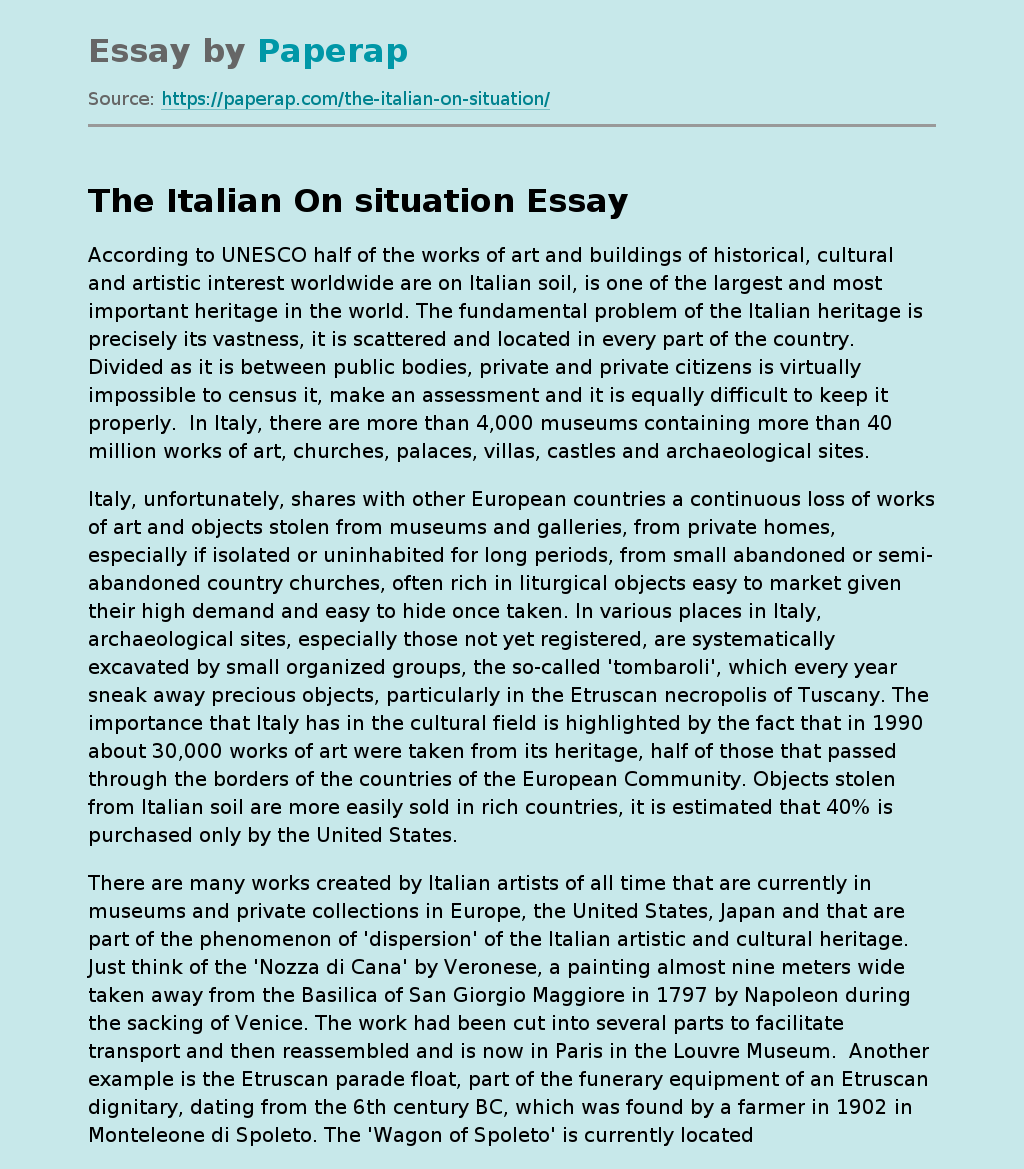The Italian On situation
According to UNESCO half of the works of art and buildings of historical, cultural and artistic interest worldwide are on Italian soil, is one of the largest and most important heritage in the world. The fundamental problem of the Italian heritage is precisely its vastness, it is scattered and located in every part of the country. Divided as it is between public bodies, private and private citizens is virtually impossible to census it, make an assessment and it is equally difficult to keep it properly.
In Italy, there are more than 4,000 museums containing more than 40 million works of art, churches, palaces, villas, castles and archaeological sites.
Italy, unfortunately, shares with other European countries a continuous loss of works of art and objects stolen from museums and galleries, from private homes, especially if isolated or uninhabited for long periods, from small abandoned or semi-abandoned country churches, often rich in liturgical objects easy to market given their high demand and easy to hide once taken.
In various places in Italy, archaeological sites, especially those not yet registered, are systematically excavated by small organized groups, the so-called ‘tombaroli’, which every year sneak away precious objects, particularly in the Etruscan necropolis of Tuscany. The importance that Italy has in the cultural field is highlighted by the fact that in 1990 about 30,000 works of art were taken from its heritage, half of those that passed through the borders of the countries of the European Community. Objects stolen from Italian soil are more easily sold in rich countries, it is estimated that 40% is purchased only by the United States.
There are many works created by Italian artists of all time that are currently in museums and private collections in Europe, the United States, Japan and that are part of the phenomenon of ‘dispersion’ of the Italian artistic and cultural heritage. Just think of the ‘Nozza di Cana’ by Veronese, a painting almost nine meters wide taken away from the Basilica of San Giorgio Maggiore in 1797 by Napoleon during the sacking of Venice. The work had been cut into several parts to facilitate transport and then reassembled and is now in Paris in the Louvre Museum. Another example is the Etruscan parade float, part of the funerary equipment of an Etruscan dignitary, dating from the 6th century BC, which was found by a farmer in 1902 in Monteleone di Spoleto. The ‘Wagon of Spoleto’ is currently located at the Metropolitan Museum in New York which bought it illegally in 1903.
A similar situation is that of the ‘Victorious Athlete’, a bronze from the 4th century B.C., about one and a half meters high by the Greek artist Lisippo, found in 1964 by fishermen in the Adriatic and illicitly sold to the Getty Museum in Los Angeles. The Getty Museum has always known that half of the works from Italy were stolen, already in 1985 it was aware that some of its art suppliers were selling illegally found objects, but this has not prevented the museum to continue to buy these objects. The immense wealth of Italy’s cultural heritage is tempting the clandestine market, thefts on commission, illegal exports and forgeries are the most concrete expressions of this situation. If we consider the thefts by region, we can see that between 2015 and 2016 in some areas they increased while in others they decreased. At the national level, however, between 2011 and 2016 there was a gradual decrease in the number of reported thefts.
The Italian On situation. (2021, Dec 13). Retrieved from https://paperap.com/the-italian-on-situation/

